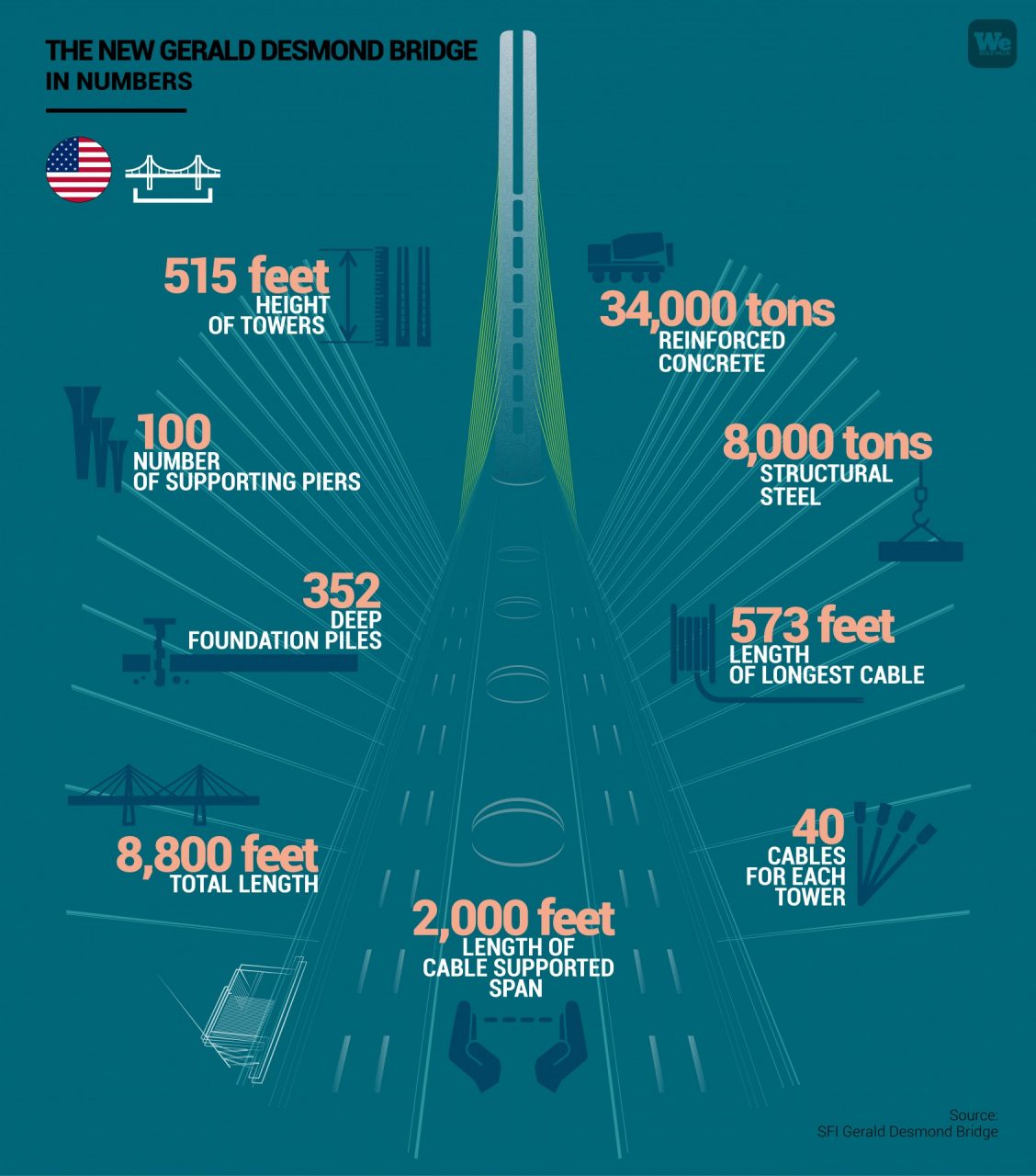The area stretching from the Port of Los Angeles to the Port of Long Beach has always stood out for its rows of shipping containers. Lines of large trucks are a familiar site along the Long Beach Freeway Interstate 710, which connects the two largest ports of the United States, part of the gargantuan urban sprawl of Los Angeles County that is home to over 10 million people.
The twin ports – Los Angeles, the nation’s largest; Long Beach, the second – handle between 18 and 20 million containers a year. Almost one container for each of the LA/LB residents, as they say around here.
The COVID-19 virus has created a surreal scenario here too. The new Gerald Desmond Bridge Replacement Project crossing over the entry way to the port has been operational for a few months The view from its central span 62 metres (205 feet, or 18 stories) above the water is the ideal vantage point for us to see what sort of changes the bridge will bring.
If we could look at them from atop the bridge right now, the containers would no longer form compact rows. Those small coloured rectangles, as if in a sort of time-lapse in reverse, disappear without being replaced. In the maze of junctions and deserted roads, only industrial vehicles, far apart from each other, circulate.
In the first quarter of 2020, compared to the same period in 2019, the Port of Long Beach recorded a 6.9% drop in cargo shipments, either leaving or arriving, empty or full. At the Port of Los Angeles, cargo shipments fell 18.5% in the same period. In March alone, the coronavirus caused a real shock to the most important supply chain in the United States.
Port operations did not stop, but were brought under control to combat the spread of the virus. On the cranes, in the marshalling yards, work continued.



